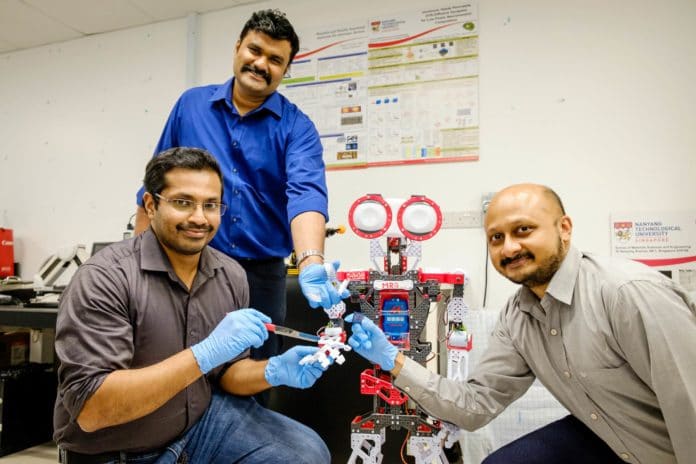Using the human brain as an inspiration, scientists from Nanyang Technological University, Singapore (NTU Singapore) developed an artificial intelligence-based “mini-brain” for robots to recognize pain and self-repair when damaged.
The system has different sensor nodes enabled by AI with the purpose of processing and reacting to pain, which emerges from the pressure exerted by force. This gives robots the ability to detect the exact area and repair their own damage when it is slightly injured without the need for human intervention.
Currently, robots use a network of sensors that typically do not process information but send it to a single large, powerful, central processing unit where learning occurs. As a result, existing robots are usually heavily wired, which results in delayed response times. They are also susceptible to damage that will require maintenance and repair, which can be long and costly.
The new perspective integrates artificial intelligence into the network of nodes and connects them to multiple processing units, which act like a “mini-brain” distributed on the robotic skin. That is, the system allows robots to learn and process things locally. The scientists also claimed that it could reduce the wiring requirements and response time for the autonomous robot by up to ten times compared to conventional robots.
The system uses a self-healing ion-gel material that allows the robot to recover its mechanical functions without human intervention in the event of an “injury” from a sharp cut.
“Our work has demonstrated the feasibility of a robotic system that is capable of processing information efficiently with minimal wiring and circuits. By reducing the number of electronic components required, our system should become affordable and scalable. This will help accelerate the adoption of a new generation of robots in the marketplace,” said Assoc Prof Basu, who is a neuromorphic computing expert.
To train the robot on how to recognize pain and learn damaging stimuli, the research team fashioned memtransistors, which are ‘brain-like’ electronic devices capable of memory and information processing, as artificial pain receptors and synapses.
During the lab tests, the robot with a mini-brain was able to learn to respond to injury in real time. It also continued to respond to pressure even after damage, proving the robustness of the system.
For now, the experiment is in the prototype stage, but the discovery made by the NTU Singapore scientists could bring with it an innovation capable of giving a new approach to robots applying new technologies such as AI and new manufacturing methods with the aim of mimicking human neurobiological functions with robots.
